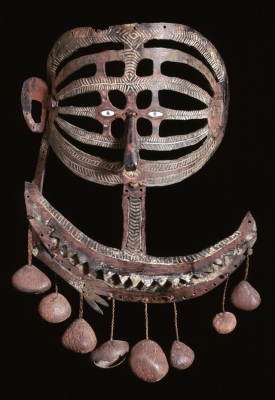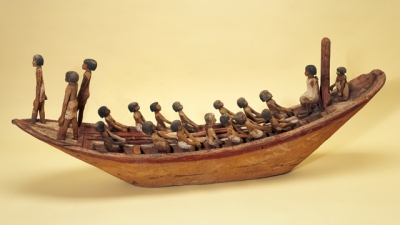To search the RPR site click here
Taken from 'Typological Museums, as exemplified by the Pitt-Rivers Museum at Oxford, and his provincial museum at Farnham, Dorset', Journal of the Society of Arts, Dec 18, 1891 pp. 115-122
pp. 118-119 ... Having now laid before the meeting my views upon the evolution of types, I desire to make a few remarks on the evolution of my own collection now presented to the University of Oxford.
My attention was first drawn to this subject nearly forty years ago, when, in the year 1852, I was engaged as a subaltern officer on the sub-committee of small arms at Woolwich in the experiments which led to the introduction of the rifle-musket into the army. A large number of inventions were submitted to the committee for trial; and I was then led to take notice of the very slight changes of system that were embodied in the different inventions, and also of the fact that many improvements which, not being of a nature to be adopted, fell out of use, and were heard of no more, nevertheless served as suggestions for further improvements which were adopted; and it occurred to me what an interesting thing it would be to have a museum in which all these successive stages of improvement might be placed in the order of the occurrence. I made a collection of arms at that time, which was the foundation of the present museum. Although this collection of arms was not a very good one, as my means of collecting were small, it led to a museum of savage weapons, and ultimately of various other arts, which were exhibited at Bethnal Green and South Kensington for nine years. Mr. Herbert Spencer, in his 'Principles of Sociology', published in 1876, thus speaks of it as he saw it at that time:- 'The collection of implements and weapons arranged by Col. Lane Fox,[1] to show their relationship to common originals of the simplest types, suggests that primitive men are not to be credited with such inventiveness as even their simple appliances appear to indicate. These have arisen by small modifications, and the selection of such modifications has led unobtrusively to various kinds of appliances without any distinct devising of them.' The portion of the museum relating to arms was described in an illustrated catalogue raisonné, which was in fact a treatise on the development of arms; this went through two editions at South Kensington, commencing in 1877. The collection afterwards grew to such size that I was anxious to see it housed in some public building, where it would be developed in other hands on the same lines, and I ultimately presented it to the University of Oxford. In doing this I made only one proviso of any consequence, which is contained in the deed of gift, viz., 'that the general mode of arrangement should be maintained, and that no changes should be made in the details hereafter, except such as should be necessitated by the advance of knowledge, and should not effect the general principles originated by me.' This took place in 1884. During the seven years that have elapsed since, the museum has been re-arranged in the order in which it was exhibited at South Kensington, so that, in the main, the order of the several series is exactly the same. Some new links have been added to the old series, and some new series have been introduced . This has been done in the first place by Professor Moseley, whose death has been so great a loss to science, and afterwards by Dr. Tylor and Mr. H. Balfour, and has been carried out to my entire satisfaction in every respect, except perhaps the great length of time that it has taken to re-arrange, which, I am informed, was unavoidable, as a building had to be erected for it, for which the University very liberally voted £10,000.
But these are not times in which anything can afford to remain buried seven years, and I have had some difficulty in persuading people, now that the collection is resuscitated, that it is the same Lazarus that was alive before. In the meantime, however, I have formed another museum, which, although it is a provincial one, is in some respects better than the first, because such series as it contains are more fully represented. The subject of provincial museums have been lately much discussed in the newspapers. I have often observed that a little knowledge of the subject is necessary to create an interest. I have often noticed that visitors to our larger museums will wander listlessly through the rooms until they come upon something they understand a little about. Then they open their eyes and prick up their ears. It is interesting to them to compare the products of other countries and people, in those particular branches of industry that they are familiar with. A local museum should, therefore, contain a good historical series of the prevailing manufacturers or industry of the locality. Acting on this principle, it appeared to me that in a rural district, sparsely inhabited, with scattered agricultural villages, and ten miles from every town and railway station, the chief feature of the collection should be agriculture and peasant handicraft.[2] I cannot convey my views on provincial museums better than be describing my own museum, because it has been collected from the first on a definite system, and has undoubtedly been a great success. ... [see here for the continuation]
pp.120-121 At the conclusion of the paper, General Pitt-Rivers exhibited and described a number of diagrams illustrative of his collection. The first was ones showing the evolution of the modern rifle and bullet through all its stages, some of which had entirely dropped out of public knowledge; and in connection with this, he suggested the desirability of a similar series being arranged, before it was too late, of various electrical appliances, many links in which might easily be forgotten. Next came a large diagram showing the arms of savages, which in the beginning were constructed of mere natural sticks and portions of branches, thus giving the form to the weapon which was sometimes imitated afterwards, when the art became more advanced. Flint implements came next, and arrow heads, the leaf-shaped being the earliest. Bronze and iron weapons were not always copied from wooden ones, though a similarity in shape might sometimes be traced; this was illustrated by a series of sword-forms. When metallurgy was first introduced, only small pieces could be cast, and therefore short daggers were the earliest forms of this class of weapon; the copper implements were of the simplest form, and the later iron ones more complex. One particular shape of sword was found over a large portion of Asia, being very similar to a Greek sword figured on vases, and it was probably derived from the Greeks. Another series of diagrams was devoted to the development of ornament, and showed the changes which the loop, coil, and fret pattern had gone through; and another showed the cross, which, as a Christian symbol, was plainly derived from the Greek letters XP conjointly, which led naturally to the Celtic cross, still largely found in Scotland, whilst the Latin cross was a later form. The degradation of silver coins, from the stater of Philip of Macedon, was also shown. Another diagram illustrated how changes occurred through mistakes in copying, and were continued and increased until ultimately the original pattern was hardly recognisable. This was especially the case in representations of the human countenance, and had, in the opinion of Gen. Pitt-Rivers, led Dr. Schliemann into an erroneous belief that the figures found on certain vessels at Hissarlik were Trojan remains, as bearing the image of the owl-faced goddess, Glaukopsis Athene, whereas, in truth, there was nothing of the owl-face about them, but merely a degraded and conventionalized type of the human face. ...
pp. 121-122 DISCUSSION ... Dr E.B. TYLOR, F.R.S., said he could not add anything to the excellent account General Pitt-Rivers had given of his system of arranging museums, but he felt that the greatest of these museums, which would mark itself in no insignificant way on the present generation, ought not to be described without someone from the University of Oxford being present to bear testimony to the importance of the educational system it represented. Before this Oxford Museum was established, it was usual to look upon a museum as an assemblage of curiosities, which had to be pointed out and explained to the visitor with great care; otherwise even the most illustrative cases would make but very little impression on the ordinary untrained spectator. But the Pitt-Rivers Museum affected the mind of the intelligent stranger quite differently. There was no trouble to explain the system upon which it was worked. There might be some little trouble, even with the aid of good illustrations when, as on the present occasion, the actual specimens were not on view; but, when they were properly arranged, the slightest hint was sufficient to convey to the intelligent mind what they were there for; and then they told their own story. Very recently, there had been a good example of how it was educating the world at large. It often happened that a series might be made purely theoretical, by putting in their order a number of specimens which referred to one another more or less distinctively, thus showing where the curve of development had probably passed; but yet important links were often wanting, and the visitor went away possessed with the desire to find those links and present them to the Museum. Only a few weeks ago, they thus acquired a much desired link in the history of stringed instruments. The late Mr. Carl Engel suggested that the strung bow must have been the origin of the whole series of stringed instruments, whether pianoforte, violin, or guitar. This view was proved to be correct when the instruments were arranged in a series, beginning with a strung bow. The difficulty, however, was to get the starting point - an authentic bow capable of being used both for hunting and twanging. One people, who were described as using the bow for this double purpose, were the Damaras; it was said that the hunter shot game with his bow during the day, and when he came home, sat by the fire and amused himself by twanging the string. Three or four weeks ago Miss Lloyd, who had spent some time in South Africa, sent them one of these bows, and it now stood at the head of the series of stringed instruments. He believed the idea of General Pitt-Rivers was destined to bear good fruit on the actual development of mankind. It has dissipated some notions as to the wonderful originality of early inventions, which, when seen in connection with what had gone before, were found to be the natural product of a mind perhaps a little in advance of its fellows, but still in the main not so far removed from them. Although all country and county museums could not be expected to become museums of development, yet it was possible for them to treat local arts and other matters in that way. A country museum would very well show, in connected series, the arts and manufactures on which the people in the neighbourhood depended for their livelihood, and this could hardly fail to be useful in promoting further progress.
See here for the earlier pages of this paper, where Pitt-Rivers considers typological museums.
Transcribed by AP as part of the Rethinking Pitt-Rivers project in June 2010 and Kent project in the 1990s





